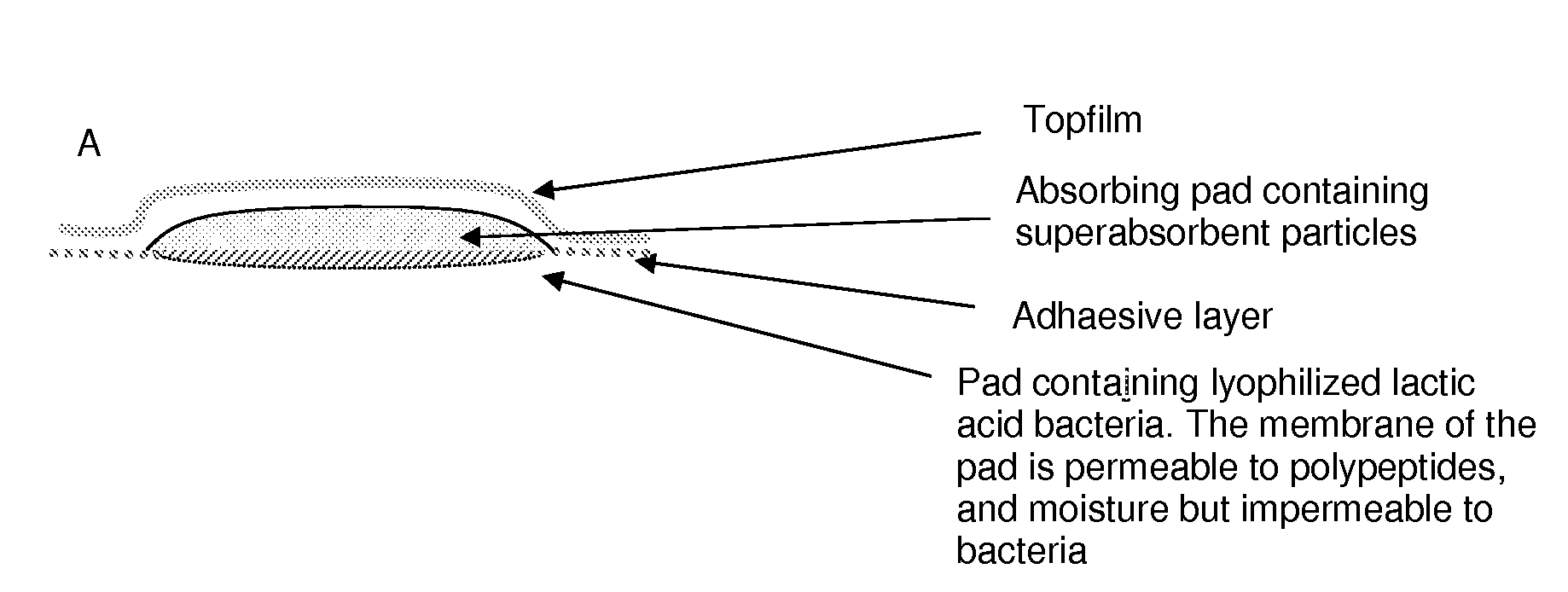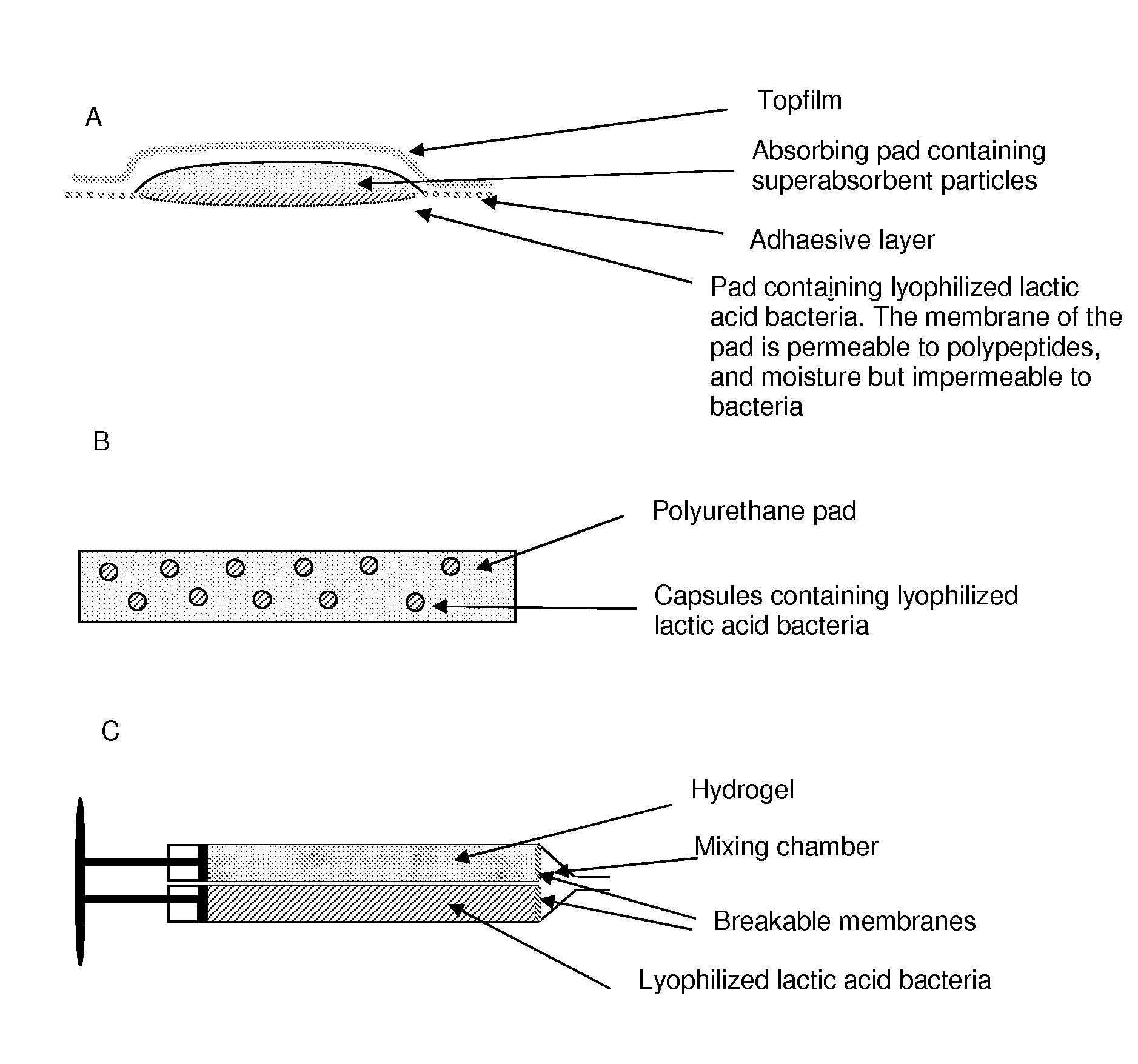Wound or tissue dressing comprising lactic acid bacteria
- Summary
- Abstract
- Description
- Claims
- Application Information
AI Technical Summary
Benefits of technology
Problems solved by technology
Method used
Image
Examples
example 1
[0177]Lyophilized Lactobacillus GG are resuspended in saline to a final concentration of 109 / ml. Gelatine sponges (2×2 cm) are kneaded in 0.8 ml of the lactobacillus suspension or in 0.8 ml saline, and transferred to LB plates previously plated with 100 ul of an 1 / 10 diluted on culture of Staphylococcus aureus, Psuedomonas aeruginosa or Escherichia coli. The plates are incubated at 37° C. After 3 days a growth inhibitory (clear) zone is visible around the gelatin sponges kneaded in the lactobacillus suspension but not around the sponges kneaded in saline.
example 2
[0178]In a two compartment syringe the one compartment is filled with 10 ml hydrogel, sealed and subsequently autoclaved. After the sterilization process, the other compartment is filled with 1010 lyophilized lactic acid bacteria formulated with suitable low moisture exhibiants (carboxymethyl cellulose and maltodextrin) and prebiotica (trehalose). Staphylococcus aureus, Psuedomonas aeruginosa or Escherichia coli cultures are grown to in exponential growth and 100 ul of the cultures and plated on LB plates when the cultures have reached an OD600 of 0.5. Wells are made in the agar plates and these wells are filled with a plain hydrogel or with the lactobacillus containing hydrogel using the two compartment syringe. The plates are incubated at 37° C. After 3 days a growth inhibitory (clear) zone is visible around the wells containing the hydrogel with lactobacillus. No inhibitor zone is visible around the well containing the plain hydrogel.
example 3
[0179]Lyophilized Lactobacillus GG are resuspended in saline to a final concentration of 109 / ml and 1 ml of this suspension is filled in a dialysis tubing with a molecular weight cut offs at 300 kDa allowing molecules up to 300 kDa to pass, but retaining the bacteria in the tube. In another tube 1 ml of saline is added. The tubes are placed on LB plates previously plated with 100 ul of an 1 / 10 diluted on culture of Staphylococcus aureus, Psuedomonas aeruginosa or Escherichia coli. The plates are incubated at 37° C. After 3 days a growth inhibitory (clear) zone is visible around the tubings containing the lactobacillus suspension but not around the tubings containing saline.
PUM
 Login to View More
Login to View More Abstract
Description
Claims
Application Information
 Login to View More
Login to View More - R&D
- Intellectual Property
- Life Sciences
- Materials
- Tech Scout
- Unparalleled Data Quality
- Higher Quality Content
- 60% Fewer Hallucinations
Browse by: Latest US Patents, China's latest patents, Technical Efficacy Thesaurus, Application Domain, Technology Topic, Popular Technical Reports.
© 2025 PatSnap. All rights reserved.Legal|Privacy policy|Modern Slavery Act Transparency Statement|Sitemap|About US| Contact US: help@patsnap.com



